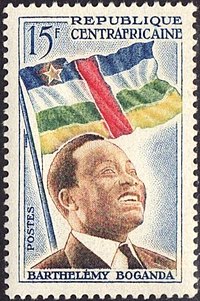New
Year’s Day (January 1). There are
a lot of festivities around this time, and many people celebrate the holiday
with good food shared with friends and family. Like many other places, Chadians
bring in the new year with fireworks displays and greetings of good fortune and
well-being for the coming year.
Prophet’s
birthday (varies). Shia and Sunni
Muslims have slightly different traditions for the Prophet’s birthday,
otherwise known as Mawlid an Nabi.
This holiday celebrates the birth of the prophet Muhammad. Special prayer services are held at
mosques around the country.
International
Women’s Day (March 8). In Chad, Women’s Day is a fairly large event. The week prior to Women’s Day is known
as SENAFET, or le Semaine Nationale de la Femme Tchadienne (National Chadian
Women Week). During this week,
there are a range of activities, including races, contests, a day off of school
for girls, community celebrations and parades but may also include educational
seminars and programs in health and family care, etc.
Easter
Monday (varies). Most businesses
and schools are closed on this day, the day after Easter. Christianity is
followed by nearly a third of Chadians, and Easter is a major holiday for them.
Many churches and missionary centers have special Easter Sunday services. Most
people celebrate with a large luncheon afterwards. Easter Monday is generally
treated as a day of rest.
Labor
Day (May 1). Like most other
countries that celebrate Labor Day, Chad also celebrates it on May 1. Most
businesses and schools are closed on this day, and people use this day to spend
with friends and family doing recreational activities and relaxing.
Eid
al-Fitr (varies). This Muslim
holiday celebrates the end of the month-long fast of Ramadan. People generally
celebrate with an elaborate feast held with friends and family. Chadian Muslims will also attend
special prayer services at their mosque.
Independence
Day (August 11). There are a lot of festivities that mark this day of
independence from France back in 1960. There are speeches from various members
of government, parades that wind their way through the streets, and many cities
and towns have music concerts and dances in the streets as well as the
ever-favorite soccer games.
Eid
al-Adha (varies). Also known as Feast of the Sacrifice, this is one of the
major Muslim holidays. It’s centered around the story of Abraham attempt to
sacrifice his only child because God asked him to. Traditionally, an animal is
sacrificed and the meat is divided between the family, their relatives, and the
needy. Nowadays, many people emphasize the practice of charitable giving. In
Chad, this holiday lasts three days, and many businesses, schools, and
government offices are closed.
All
Saint’s Day (November 1). All
Saint’s Day is the Christian (and especially Catholic) holiday that celebrates
all of the saints. Many saints already have their own feast days, but this
holiday is used to celebrate all of them, including the ones that don’t already
have a day of their own. Some Chadian Christians attend special church
services, while everyone else enjoys the day off.
Republic
Day (November 28). This is the day that Chad declared itself a republic after
gaining independence. It’s celebrated in much of the same ways that
Independence Day is celebrated, with festivities and parades and soccer games
and such, and people decorate their cities with the national colors of red,
yellow, and blue and proudly wave their flags.
Freedom
and Democracy (December 1). This
day is in honor of Idriss Déby and the defeat of rebel commander Hissène
Habré. Habré was the former
defense minister who was at the heart of a coup and put the country into chaos
from 1983 until 1990 when Déby overtook the government and ousted the rebels.
Most businesses and schools are closed on this day in remembrance of these
events.
Christmas
(December 25). Many of the
Christmas traditions in Chad were borrowed and introduced from European
traditions, such as putting up Christmas trees and holly. Although, I’m not sure if their trees
are fake evergreens or if they substitute it for some local tree or
shrubbery. They also hang lights
and teach their children to be good or Santa won’t bring them presents. Most people celebrate this day with a
special meal and spend time with family.
Up
next: art and literature


























